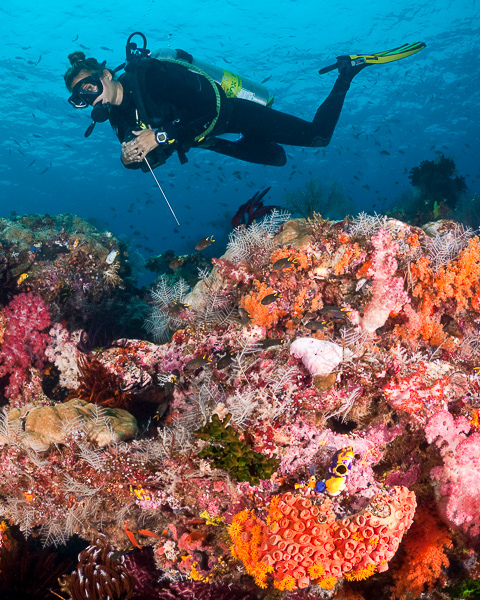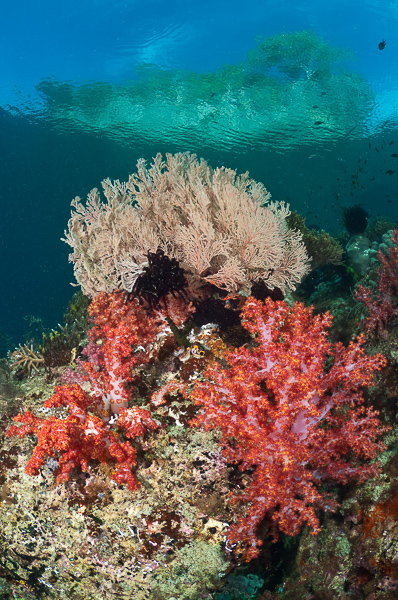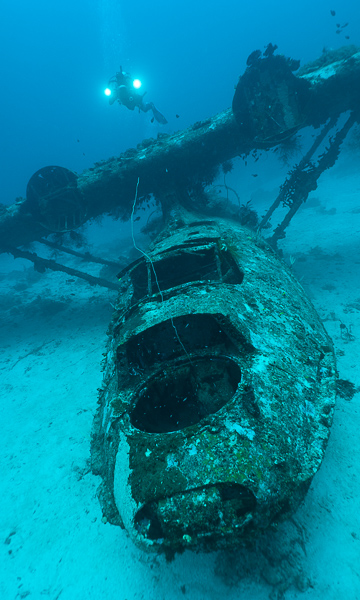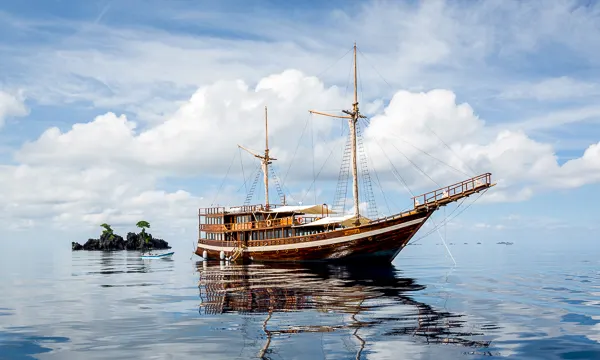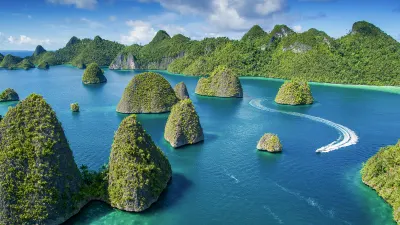
Scuba diving in
West PapuaDiving Highlights
- Visit the heart of the famous ‘Coral Triangle’
- Dive reefs with the highest recorded marine diversity on the planet
- Swim with giant oceanic manta rays
- Encounter whale sharks in Triton Bay
- Enjoy pristine white sand beaches and turquoise lagoons
- Search for 'walking sharks' on a night dive
The province of West Papua is made up of the renowned Bird’s Head Peninsula and over 2500 islands, cays, shoals and reefs dotted around the coastline. The interior is split by towering jungle-clad mountain ranges, while the coastal landscape is dominated by dramatic karst scenery hiding placid, turquoise lagoons. Papuan culture is strong and proud and guests will feel immersed in a very different part of the world. From the languages spoken and vibrant customs to the tree kangaroos, cuscus, and incredible numbers of endemic bird species, travelling to West Papua feels like exploring a new frontier.
Destinations in West Papua
Ready for your dive adventure in West Papua?
Search, compare and book from our hand selected resorts and liveaboards.
Top West Papua experiences

Dive with giant oceanic mantas in Misool
With its reefs and coral pinnacles, Misool is a mecca for manta rays. In fact, it is one of the few places on Earth where divers can encounter both reef and oceanic mantas.

Explore the most biodiverse reefs on the planet
Scientists have discovered that the beautiful reefs of northern Raja Ampat are home to more species than any other dive destination on the planet.

Take an early-morning dip with whale sharks in Triton Bay
Visit during the dark of the moon and take a trip to the local fishing platforms in the early hours – you’ll be in with a great chance of swimming alongside the ocean’s biggest fish.

Discover WWII wrecks in Manokwari and Biak
Plunge into West Papua’s turbulent past with a scattering of WWII-era wrecks, offering exploration opportunities for divers of all experience levels.

Search for endemic walking sharks in Raja Ampat
Raja Ampat, Cenderawasih Bay and Triton Bay all boast their own endemic species of walking shark. These amazing creatures can be seen shuffling over the reef at night.
When to dive West Papua
Two distinct seasons influence diving in West Papua. The northwest monsoon runs from September or October to April and is considered the best time to visit. From June to September the southeast monsoon brings winds and rough seas to Misool, in the south of Raja Ampat, and Triton Bay even further south. In fact, resorts in Misool and Triton Bay close down during this period due to the difficult conditions. The northern and central areas of Raja Ampat, and Cenderawasih Bay, are more sheltered from these winds and remain open all year.
The equator cuts right through the northern islands of West Papua, guaranteeing a hot and humid climate. Day time temperatures are normally 31-32C, whilst nights can cool to 24-25C. The wettest months are July to August, and November to December, but showers generally don’t last long. And, this being the tropics, you can expect some rain whenever you visit. Water temperatures in Raja Ampat and Cenderawasih Bay are warm year-round, never varying much between 27-29C. Triton Bay does get upwellings of cooler water for a few months each year, but the temperature is still a balmy 25-26C.
